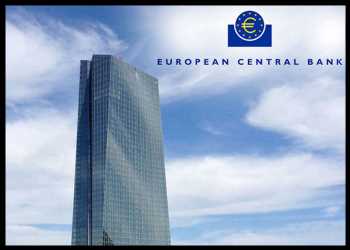ECB Rate Hikes Have A Long Way To Go
The European Central Bank is set to continue its interest rate hikes for some time ahead as the minutes of the latest policy session in December revealed that many policymakers had sought a jumbo raise of 75 basis points due to the prospect of inflation staying high for too long, but eventually agreed on a smaller half basis point lift in a bid to have more room for higher rates in the future. Elsewhere, ECB President Christine Lagarde and fellow policymaker Klaas Knot also signaled that interest rates have to rise further as inflation remained uncomfortably elevated, and the former even cautioned markets against pricing in smaller hikes.
“A large number of members initially expressed a preference for increasing the key ECB interest rates by 75 basis points, as inflation was clearly expected to be too high for too long,” the minutes, which the ECB calls ‘account’, of the December 14-15 Governing Council meeting showed Thursday.
These members also observed that prevailing market expectations and financial conditions were plainly inconsistent with a timely return of inflation to the ECB’s 2 percent inflation target.
Speaking at the World Economic Forum in Davos, Switzerland, Lagarde said the ECB was determined to continue with interest rate hikes to bring inflation to target.
“Inflation, by all accounts, is way too high,” the ECB chief said.
“There is determination at the ECB to bring inflation back in a timely manner and we should stay the course with high interest rates until we have been in restrictive territory for long enough to bring it down,” Lagarde said.
Knot, the Dutch central bank chief and a hawk on the ECB Governing Council, told CNBC on Thursday that the central bank may have to go for “multiple 50 basis point hikes” to rein in euro area inflation.
Following the December move to slow the pace of rate hikes to 50 basis points from 75 basis points, and the ECB’s communication that rates will be raised in a steady manner, markets had priced in two more half basis point hikes, one each in February and March before the bank hit a pause.
However, Lagarde on Thursday urged markets to revisit their positions.
The first ECB rate hike last year was a 50 basis points raise in July, which was also the first since the same month of 2011. That was followed by two jumbo rate hikes of 75 basis points each, in September and October.
Read more: Lagarde Signals More ECB Rate Hikes
Deterioration in the inflation outlook warranted an interest rate hike larger than that priced in by markets, the ECB minutes said.
Policymakers were worried that failing to exceed market expectations could be regarded as confirming market views on the future policy path, which could result in the yield curve not shifting upwards to the extent required to bring inflation back to target.
A broad majority of members supported ECB Chief Economist Philip Lane’s proposal of a 50 basis points hike and the message that interest rates would still have to rise significantly at a steady pace to reach levels that were sufficiently restrictive to ensure a timely return of inflation to target, the minutes said.
“A 50 basis point increase was judged to constitute an appropriate pace at which monetary policy could be tightened in a manner that was still expeditious, while recognizing the uncertainties surrounding the state of the economy and the inflation outlook,” the minutes said.
These members assessed that the steadiness of rate hikes and the time over which interest rates remained in restrictive territory mattered more than the front-loading of rate hikes and the speed of monetary tightening.
They agreed that a 50 basis points hike in December would allow the Governing Council to tighten monetary policy over a longer period, which was important given the increased persistence of high inflation.
That said, it was also pointed out that sustained 50 basis point increments could take interest rates to sufficiently restrictive levels quickly, over the course of a few meetings while allowing rate-setters to evaluate the impact along the way.
Read more: Eurozone Industrial Resilience, Narrower Trade Deficit Signal Shallow Recession
Members who stuck to their demand for a bigger 75 basis points hike saw it as the most straightforward response to financial conditions becoming inconsistent with the expectation of inflation remaining higher for longer with risks remaining tilted to the upside.
For them, strengthening communication was deemed important in this environment, but did not constitute a substitute for a larger rate increase or a remedy for an insufficiently large increase.
They found Lane’s proposal proposed adjustment of the monetary policy stance insufficient – even taking into account the combination of a 50 basis point interest rate hike with the announcement of a reduction in asset purchase program, or APP, reinvestments, the minutes said.
Some members favored reducing the APP portfolio at a faster pace or for terminating reinvestments altogether as passive balance sheet reductions were seen as overdue with markets looking forward to announcement in this regard as early as the October meeting. A faster reduction would also give more policy space for the future, they stressed.
However, others pointed out that too fast a pace of reduction could lead to the re-emergence of bond market fragmentation, which could make further interest rate increases more difficult to pursue.
“Hawkishness is no longer a characteristic of just a few ECB members; it is now the mainstream view,” ING economist Carsten Brzeski said.
Another 50 basis points rate hike at the February meeting looks like a done deal and another similar move at the March meeting even looks highly likely, the economist said.
“As long as core inflation remains stubbornly high and core inflation forecasts remain above 2 percent, the ECB will continue hiking rates,” Brzeski added.
Source: Read Full Article

